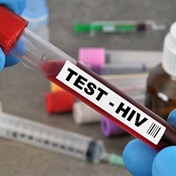"We must do more to protect our future, finding better ways to treat the youngest among us..." said International Aids Society (IAS) President Dr Pedo Cahn.
An estimated 2.3 million children are HIV-infected, with around 600 000 new infections each year. Without treatment half of all babies infected will die before their second birthday.
Only 15% getting medication
Yet only 15 percent of children who need treatment are currently receiving antiretroviral drugs, the IAS conference in Sydney was told on Wednesday.
"The goal of treatment in children must be balanced between halting the effects of the HIV disease and the long-term effects of antiretroviral on a developing child," said Dr Annette Sohn from the Division of Paediatric Infectious Diseases at the University of California in San Francisco.
Sohn said HIV-infected children on antiretrovirals risk HIV encephalopathy, where the brain swells and damages tissues over time, reduced neurocognitive development and lower bone density.
Conference members were told that early treatment of children increased survival rates, but Sohn said some children who have been on early treatment have been forced onto second- and third-line drugs as the virus quickly builds resistance.
"It's clear that response to treatment is better when children are started before they develop severe immune deficiency," she said. "What is the future for those children already on second-line drugs at the age of 5?"
Adult-designed drugs
Those lucky enough to receive antiretroviral treatment are usually administered adult-designed drugs, cut into smaller and sometimes inaccurate doses which may mean treatment failure.
"Most of the world has been forced to split adult tablets into child size pieces. However splitting tablets into anything less than one half risks under or over dosing," said Sohn.
"It means children that require smaller-sized pieces may be under-dosed, leading to inadequate drug levels and risk of treatment failure."
Sohn said there was a need for generic paediatric drugs which would be cheaply shipped, stored and administered.
Wider range needed
"We still need more paediatric antiretroviral formulations. Children clearly need a wider range of drugs in dual and triple combinations," she said.
The United Nations says close to 40 million people are infected with the Aids virus and that treatment had dramatically expanded from 240 000 people in 2001 to 1.3 million by 2005.
In June, world powers at the Group of Eight (G8) summit in Germany set a target of providing Aids drugs over the next few years to approximately 5 million people.
The three-day IAS conference, attended by 5 000 delegates from more than 130 countries, urged governments to allocate 10 percent of HIV funding to research, both medical and operational, to ensure treatment reached those in the world's poorest nations.
"HIV presents one of the greatest and most complex scientific challenges of our time," said Professor David Cooper, co-chair of the 2007 IAS conference.
"Confronting this challenge will require sustained political will and increased resources dedicated to Aids research." – (Reuters Health)
Read more:
HIV/Aids Centre
July 2007




 Publications
Publications
 Partners
Partners










